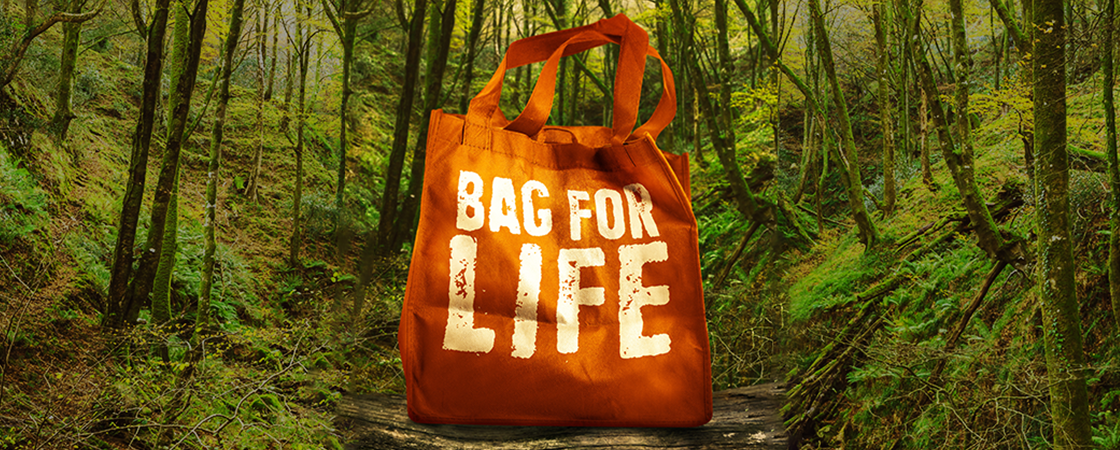1. Read the story twice.
2. Look for clues that help you understand why Amila’s dad is carrying the bag for life.
3. In one sentence, explain what Amila understands at the end of the story.

Can you guess what’s inside?
Learning Objective: to write a prequel for a work of flash fiction
Directions
1. Read the story twice.
2. Look for clues that help you understand why Amila’s dad is carrying the bag for life.
3. In one sentence, explain what Amila understands at the end of the story.
What’s in the bag?” I ask for the umpteenth time.
Umpteenth . . . Such a weird word. Ump-teenth, ump-teenth. The image of what an ump monster might look like appears in my head, complete with row upon row of garish teeth. It’s funny how your mind occupies itself when you’ve got nothing to do but walk. I push aside a low-hanging branch so it doesn’t thwack me in the face.
“You’ll find out soon, Amila,” says Dad. His answers are always vague when I ask about the bag. “I’m saving it for when we really need it.”
He’s told me that before.
Dad’s been clutching the bag ever since we entered the forest. I’m not sure where or when he picked it up. It’s the only thing either of us is holding; we left too quickly to take anything else. The bag is from a supermarket—it’s one of those “bag for life” ones. It’s orange and the writing on it is cracked and faded. The plastic’s too thick to see through.
Trust me, I’ve tried.
There’s food inside, I know that much. It has to be food. Dad says we have to save it for when we’re desperate, but I don’t know how much more desperate we need to be. We’ve been walking for two days and all I’ve eaten is a handful of blackberries and some wild mushrooms, which made my stomach cramp.
From the look of its weight and the way the bag swings, I think it’s tins. Maybe tuna or baked beans or spaghetti hoops. Spaghetti hoops are my favorite. On toast, with loads of butter. My mouth starts salivating at the thought of it.
Or perhaps it’s dog food. Right now, I’m so hungry I’d even eat that. I’d probably enjoy it too.
“Can we eat the food yet?”
“No.”
“What about now?”
“No.”
“What about now?”
“No.”
That’s about the extent of our conversations in the days that follow. My feet are sore, my back aches, my whole body feels like it’s falling apart. We’re never getting out of here.
I keep my eyes on the bag for life as it sways back and forth, back and forth. Maybe it’s not tins. Maybe it’s chocolate or biscuits or—
“Look!” says Dad. “Over there.” There’s a massive grin on his face.
I was so lost in my thoughts, I hadn’t even noticed we’d left the forest. I follow Dad’s finger and see the buildings. There’s smoke coming out of the chimneys.
“People!” I say.
“We’re going to be all right,” says Dad.
“But what about the food?” I point at the bag. “We never ate it.”
“No,” says Dad. “We didn’t.”
Then he does what I’ve been wanting him to do ever since we entered the forest; he opens the bag.
I hold my breath and peer inside.
“Oh,” I say, and then I understand.
At the bottom of the bag, smooth and gray and speckled with dirt, are three large stones.
“Bag for Life” by Joseph Elliott from The Book of Hopes edited by Katherine Rundell. Published by Bloomsbury Children’s Books. Copyright © Joseph Elliott. Reproduced by permission of the author c/o Rogers, Coleridge & White Ltd., 20 Powis Mews, London W11 1JN
Narrative Writing Prompt
Make inferences (and use your imagination) to write a prequel: a story about events that happened before “Bag for Life.”
This story was originally published in the May 2022 issue.
1. PREPARING TO READ (5 MINUTES)
2. READING AND DISCUSSING: (30 MINUTES)
3. SKILL BUILDING AND WRITING (30 MINUTES)